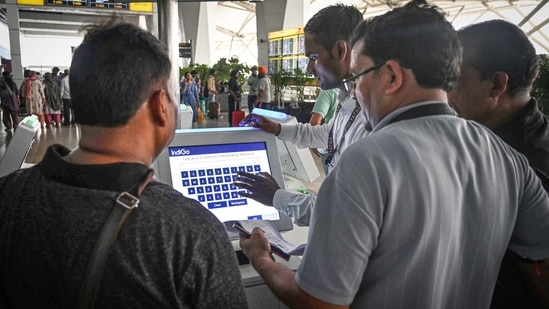Friday began on a crazy note for the world. Having woken up to wars in the past two years, the action shifted to the cyber world this Friday. Airlines in the United States reported issues with communications to the Federal Aviation Administration (FAA) and requested for a ground stop later at night, which was in effect with the major airlines suspending worldwide operations for a brief period.
ALSO READ: 192 IndiGo flights cancelled; refund, rebook option temporarily unavailable
Screens at airports across the world went Blue or the so-called “Blue screen of death”, FIDS (Flight Information Display Systems) started showing blue screen of death, and airport and airline systems came to a grinding halt.
ALSO READ: Microsoft Windows’ ‘Blue Screen Of Death’: Which services are affected in India?
The issue was caused by a technical problem that global cybersecurity firm CrowdStrike said it had identified in its software and was working to resolve. CrowdStrike provides antivirus software to Microsoft for its Windows devices.
ALSO READ: Global PC outage: Handwritten boarding cards, failed payments & a messy software
“Earlier today, a CrowdStrike update was responsible for bringing down a number of IT systems globally. We are actively supporting customers to assist in their recovery,” Microsoft said in a statement.
The impact was on almost every sector which had Microsoft CrowdStrike combination in use, from emergency services to airports and hospitals to parcel and express couriers.
ALSO READ: 26 flights cancelled, many more delayed at Bengaluru airport following outage
Airports and airlines in India started sharing information via social media about the outage they are facing. FIDS started showing the Blue Screen of Death and check-in systems weren’t working. As the scale of the outage became known, passengers took to social media to express disbelief at screens going blue or blank at the airports, check-in coming to a stop, and booking engines not working.
Why were airlines and airports impacted?
The impact of the faulty update was not only on the PCs alone but also impacted the Microsoft Azure platform, the cloud storage arm, and the 365 services platform.
Airlines and airports who use Microsoft Azure for their services faced the impact. This justifies why some and not all airports were impacted. Interestingly, the state-run Airports Authority of India airports were not impacted by this outage, but the privately run Delhi, Hyderabad, Mumbai and Bengaluru were with major impact at Delhi – the largest airport in the country.
Similarly, airlines that had a heavy reliance on Azure for everything from hosting websites and booking engines to revenue management systems and Departure Control Systems faced the brunt of the outage, while there remained many airlines that did not face a disruption. There remained a handful of airlines that did not face disruption but were impacted by the airport outages.
What did they do?
Airlines resorted to issuing boarding passes manually in the absence of working systems. This was a bigger challenge for connecting passengers who needed two boarding passes. The software that airlines and airports use, like the Departure Control Systems saw outages as those softwares were hosted on Azure which was heavily impacted. The domino effect had taken a toll.
Airlines train their staff for manual operations which is generally a part of their refresher training. However, there remains a difference between training for a single flight versus handling a sea of passengers for delayed flights. The airlines decided to cancel a significant number of flights and delay many of them to get passengers to their destination, offering alternatives or refunds wherever possible. Airports and airlines relied on whiteboards to update flight status and gate information and that was the best one could do given the circumstances.
ALSO READ: Crowdstrike glitch: Passengers ‘stuck’ at Dubai airport as flight services hit
What should the passengers do?
The only thing that the passengers can do is show patience at the moment. These are issues beyond the control of the airline or airports and everyone is trying their best to manage operations given the current uncertainty. .
End of Friday, systems weren’t up and running at airports and airlines across the world. The residual impact continued and is likely to continue over the weekend, as the airlines evaluate holistically. If you are a passenger flying over the weekend ,ensure that you check the status of the flight with the airline before you travel to the airport or keep an eye out for the message and automated calls from the airline.
The cancellations on Friday will have a cascading impact on Saturday and Sunday in some cases and if it takes longer for the IT systems to be back, the impact could be as severe, if not more.
ALSO READ: Viral timelapse reveals US air traffic crash as IT outage strands passengers
Tail Note
On a day when Airbus received certification for its A321XLR – which allows long flights on narrowbody planes, the world was finding it difficult to take a single flight. One wonders, if the world is connected or dependent?
Airlines will have to work on a serious disaster recovery plan to be put in place. Will the airline balance sheets be richer because of this outage? In the past, compensations from OEMs for planes and engines have added weight to airline balance sheets, will this add weight to?
